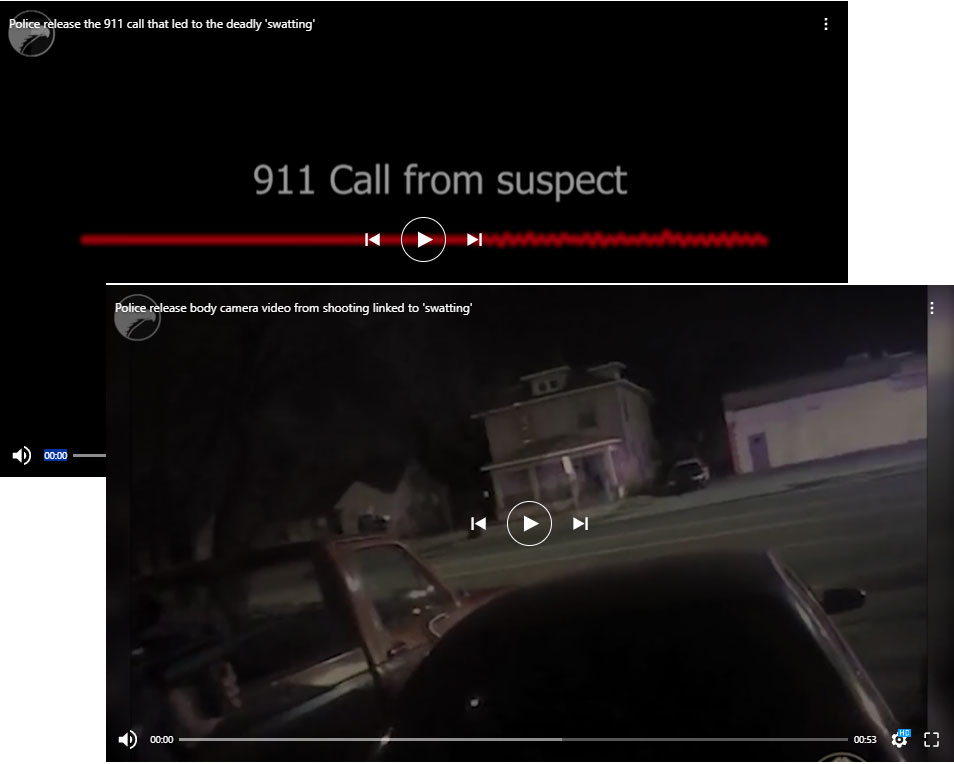Are politicians swatted enough to make emergency dispatchers authenticate emergency calls?
Hopefully, the recent wave of swatting politicians, government officials, and judges, will spur them to make it a crime for the emergency answering and dispatch services not to authenticate calls that could result with dispatching a SWAT unit.
Considering the frequently lethal consequences, one could think emergency dispatchers would use a call authentication system/systems before sending out SWAT units. Call authentication systems are already in place and can authenticate a call in less than one second. See below.
Both landline and cell phone calls to 911 emergency answering and dispatch services should come with Automatic Number Identification (ANI) or, for cell phone calls, pseudo-ANI. ANI transmits a directory number or the Billing Telephone Number (BTN).
Pseudo-ANI (p-ANI), is a unique, non-dialable number for each individual 911 call from a cell phone, assigned at a mobile switching center and used by 911 operators to find the cell site and sector from which the cellphone is calling. Thanks to ANI and p-ANI, phone companies know about every call from every phone number, so phone companies can bill for the calls. Unlike Caller ID, ANI practically cannot be spoofed, but it may be not sent, causing the so-called ANI fail, a sure sign the call is not local, perhaps even coming from another country, therefore not legitimate. Having the ANI, the phone network gets the caller’s address through Automatic Location Identification (ALI) tapping into phone companies’ subscriber databases that matches phone numbers to names and addresses. Spoofing ALI is next to impossible too.
Calls from cell phones may be located by triangulating between cellular towers nearest to the calling phones, and/or by using phones’ Global Positioning System (GPS) receivers, and by detecting wifi networks if phones are connected to them. For the purpose of 911, cell-phone calls are located by triangulating between the cellular towers, and/or by GPS. Info from cellular towers suffices, so calls may be located, even if made from phones in which built-in GPS are turned off. If the calls’ location is outside the PSAP receiving the calls, the calls are not legitimate. Calls from burner phones are located the same way as all mobile phones, by using info from the nearest cellular towers.
VoIP (internet phone) calls made from phone numbers or IP addresses (Internet Protocol addresses) not registered with the E911 system are very suspect. If coming from IP addresses outside the PSAP receiving the calls, certainly not legitimate.Since November 2021, all telecommunications service providers (TSPs) in the U.S.A. are required to authenticate VoIP calls with STIR/SHAKEN (Secure Telephone Identity Revisited and Signature-based Handling of Asserted information using toKENs). STIR/SHAKEN provides verified information about the caller as well as the origin of the call. Tampering with STIR’s digital certificate causes the authentication to fail. To learn how, read wikipedia.org/wiki/STIR/SHAKEN#STIR.
There are three levels of STIR/SHAKEN certificate attestations: A-level, B-level, and C-level. The attestation level of a call is determined by the originating telephone service provider, each level reflecting the service provider’s ability to identify the caller and the caller’s right to use that particular number.
A-level (Full attestation): the service provider signing it can identify the caller and attest to their right to use that telephone number.
B-level (Partial attestation): the service provider signing it can identify the caller but cannot attest to their right to use that telephone number.
C-level (Gateway attestation): The source of the call is not verified.
What could be an excuse for believing calls with other than A-level attestation?To bypass call authentication of the 911 system, swatters use VoIP to phone in fake emergencies to non-911 emergency numbers, for example, the phone number of a police department, or the administrative phone number of a PSAP. Reports of crimes or emergencies, such as warnings of an attack, made on a non-emergency line (not on 911), are very suspicious. Such reports are a common technique of swatting. Just think: There is a crime happening, or about to happen, and instead of calling 911, the caller takes the time to look up the number of local police.
With all the above tools for authenticating calls, no fraudulent swatting calls should succeed. But they still do. So police SWAT units often raid innocent people’s homes and shoot these people, on fake emergency calls.
Conclusion: Either the emergency answering and dispatch services can’t be bothered to use those systems, or else, the police departments itch for action with some trigger time, so they act on calls made to non-911 emergency numbers, say, directly to a police department, without authenticating the calls, even though there are automated call authentication and spoofing detection services, for example, SecureLogix, which do all the above checks and many more in seconds.
Don’t you think emergency answering and dispatch services ought to be required to use these systems? And shouldn’t there be a criminal liability for not heeding the signs of fraudulent calls?
To hear an example of an unauthenticated VoIP call to 911 and to view the video of the swatting that followed, click this link: real-self-defense.com/swatting-facts/.





Where there is a will, there is a way. Where there is a will to get some trigger time, raiding without checking is a way.
What’s worse, the vile or the stupid?
Impunity breeds irresponsibility.
See info at https://americancop.com/swatting-ways-to-combat-this-technology-based-phenomenon/